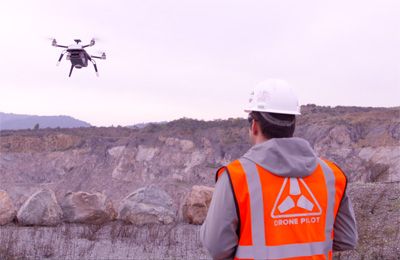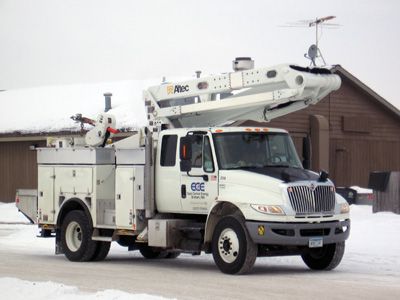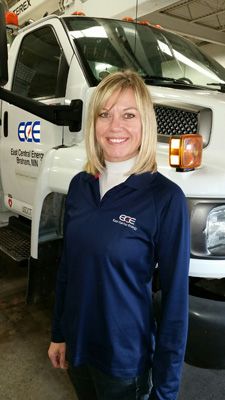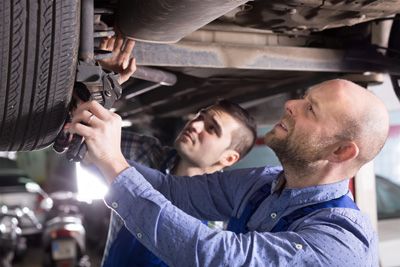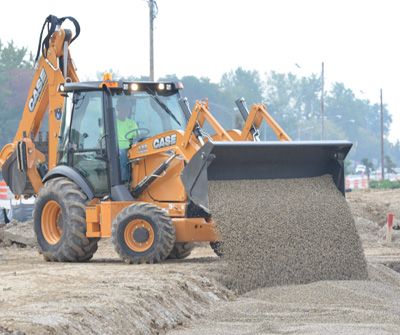“Seek first to understand, then to be understood.” This is the fifth habit in Stephen R. Covey’s perennial best-seller, “The 7 Habits of Highly Effective People.”
And it could also serve as a guiding principle for today’s baby boomer and Gen X fleet managers as they grapple with replacing a large swath of workers retiring over the next few years with millennials who bring a substantially different perspective toward their work and lives.
Also known as Generation Y, millennials – ages 18 to 34 as of 2015 – are projected to surpass the baby boomers – ages 51 to 69 – as the nation’s largest living generation this year by a total of 75.3 million to 74.9 million, according to Pew Research Center. They represent a much larger generation than their Gen X parents – ages 35 to 50 – who aren’t expected to eclipse the boomer population until 2028.
Millennials are often labeled as too idealistic, entitled, lazy and obsessed with instant gratification. But as the seismic generational shift occurs in the job market, smart fleet managers must look beyond the perceptions and “seek first to understand” to compete for the best young talent.
So, whether you’re a boomer, Gen Xer or millennial yourself, how can you more effectively attract, retain and motivate millennials? Consider these five strategies.
1. Talk about your industry, organization and the job in the context of purpose.
Millennials are looking for more than just a paycheck; they want to be part of something they perceive will make a difference in their communities and the world.
“The main characteristic we’re observing in millennials is that they’re purpose-driven – more so than other generations,” said Jim Finkelstein, author of “FUSE: Making Sense of the New Cogenerational Workplace” and the president and CEO of FutureSense Inc. (www.futuresense.com), a San Rafael, Calif.-based professional services firm that was founded in 1995 to advise, consult and support clients in the areas of people, organization and strategy. “When you look at old-school industries, such as the utility sector, you often see that they have a challenge of connecting with younger workers because they don’t address the ‘why’ question for millennials: ‘Why do I want to be involved with this industry?’”
Finkelstein said this priority of purpose versus paycheck is largely because millennials have become disillusioned by observing their parents, who would grind it out in jobs they didn’t enjoy, sacrificing family time in the name of career advancement and financial stability, only to get burned by layoffs and market crashes, like what happened in 2001 and 2008.
“They’ve seen the impact of economic disaster and the emotional toll it has taken on their parents’ generation. And they’re saying, ‘You know, maybe I can get by with a little less.’ They’re much more minimalistic in how they approach the acquisition of assets, and more focused on fulfilling their passion and purpose,” Finkelstein said.
How can the utility fleet industry tap into a millennial’s pursuit of a purposeful career?
Finkelstein advises fleets to frame the job in these terms: “Why is it important to have a fleet that is well-functioning and fuel-efficient? How will this impact creating a cleaner environment? How will it help advance the causes they believe in? Millennials need to see the purpose, the big picture that draws them into a movement – something more than, ‘Oh well, I need to get to work to fix a few trucks today.’”
Matt Gilliland, fleet services manager for Nebraska Public Power District, said that his utility’s purpose-driven focus has helped substantially with recruiting younger workers. “We’re all about doing what’s right for Nebraskans,” Gilliland said. “And that commitment to serving the community really connects with millennials who share that service-oriented attitude. They like to see an organization, a team or even a boss that has objectives larger than just completing work by the end of the day.”
2. Accommodate for work-life balance.
According to a recent survey by Ernst & Young, “Global Generations: A Global Study on Work-Life Challenges Across Generations,” U.S. millennials are the most likely generation to say they would change jobs – 77 percent, versus 71 percent for Gen X and 49 percent for baby boomers – or give up an opportunity for a promotion – 65 percent, compared to 56 percent for Gen X and 47 percent for boomers – to more effectively manage work-life balance.
A major driver of this trend, the report stated, is that close to 80 percent of the millennials surveyed are part of dual-income couples, with both spouses working full time. And that means they share more responsibilities at home, compared to the majority of baby boomers, where one spouse works full time. As a result, millennials value increased schedule flexibility and paid parental leave more than other generations, the report said.
Paul Jefferson, fleet manager for Oklahoma Gas & Electric (OG&E), has observed this trend firsthand with younger mechanics in his organization. “There were several mechanics we would hire, and six months to a year later, they would go on and work for someone else. They would even lose money to go somewhere else.”
When looking deeper into this issue, Jefferson realized the existing shift schedule didn’t work well for younger mechanics with family responsibilities. “In the past, we had 95 percent of our mechanics scheduled to work the evening shift [2-11:30 p.m.] and a handful work the early shift [7 a.m.-3:30 p.m.],” he said.
Jefferson worked with his team to develop a compromise, so that all mechanics would be on a rotation with two weeks of day shifts and two weeks of evenings. He also changed the evening hours to 1-9:30 p.m., so those who worked the late shift would still get home two hours earlier than the previous schedule. That way, his team could accommodate the work-life balance needs of his mechanics by providing more day shifts, while ensuring all shifts are fully staffed to meet the service needs of the entire organization.
The new schedule went into effect in September 2014. A year later, it seems to be working. “We haven’t lost any mechanics since the change,” Jefferson said.
3. Become a more collaborative leader.
Beyond being purpose-driven and offering a more flexible schedule, what should utility fleets consider to attract and motivate millennials?
“Create a highly collaborative, team-oriented environment, where people are tapping into each other’s potential and where leaders are seen more as mentors and guides,” Finkelstein said.
Gilliland agrees. “Traditionally, it has been that those who exhibited a high level of technical knowledge would get promoted into management,” he said. “But millennials put more value on strategic thinking and seeing the big picture than technical expertise. They want their leader to be more of a team leader, an inspirational guide who collaborates with them to get things done, and there’s less emphasis on someone who has the technical knowledge.”
This also means the command-and-control leadership model is likely to be a turnoff to most millennials. “It used to be, if the boss says it, you do it. Not anymore,” Gilliland said.
He recommends that fleet managers take a more participative management approach, getting workers involved in the planning and decision-making processes. “Instead of me sitting in a meeting and dictating the steps we’re going to do, it’s more of this: ‘Here are our challenges, here’s what would be ideal and here are the expectations of what things should look like in the end. What are some ways we can get there?’”
4. Tap into instant gratification as a motivator.
Millennials have become accustomed to on-demand conveniences. They’ve grown up in a digital world where, with a few keystrokes on a computer or swipes on a smartphone, they can order food, watch videos or even direct message the most famous celebrities. And with social media likes, shares and comments, they’re conditioned to get instant feedback on their thoughts and ideas.
In other words, millennials are conditioned to expect instant gratification. So, how does this impact your management style?
Jefferson said that one adjustment he has made is to “react quickly and communicate frequently. Especially with the positive stuff. Often, that motivates [millennials] more than a raise.”
Finkelstein recommends that when you’re giving raises, bonuses or other type of rewards, don’t wait until the end of the year. “We often wait too long to give somebody a bonus, the money that recognizes their accomplishments,” Finkelstein said. “Make those rewards more episodic throughout the year – that’s great for keeping millennials engaged.”
This goes for nonfinancial rewards as well, according to Finkelstein. “Based on their desire for work-life balance, a real big driver for millennials is time off,” he said. “We might assume they’re lazy, but in fact, if you give millennials more opportunities to take time off throughout the year, they refresh, renew and come back even more juiced to do the work that is necessary.”
5. Personalize your approach.
Despite some of the common characteristics of millennials, avoid the trap of assuming all millennials fit the same profile. “We have to recognize unique motivators and customize our approach on how we lead people in the marketplace,” Finkelstein said.
He recommends fleet managers put together what he calls a “UMP” – a unique motivational profile. “Millennials who don’t have kids have a very different motivational profile than others that have kids. We also have real diversity in needs and interests. So if we start generalizing and say all millennials want time off, there may be millennials who don’t. I think we have to resist the urge to generalize.”
That’s the hard part. And it takes time. But it’s imperative to personalize your approach if you’re going to get the most out of your people, Finkelstein said. “Everybody who works on the shop floor, everybody who works as a mechanic – they are not all cast in the same mold. They are all different and unique. Once we get that, then we’re going to be able to build a system of interaction with them that’s customized and truly effective, tapping into their unique humanness, potential and motivations.”
The Bottom Line
All five of these strategies point back to Covey’s maxim to “seek first to understand.” It’s only with deep understanding and genuine empathy that you can effectively connect with the minds and hearts of millennials – and maximize their potential in your organization.


